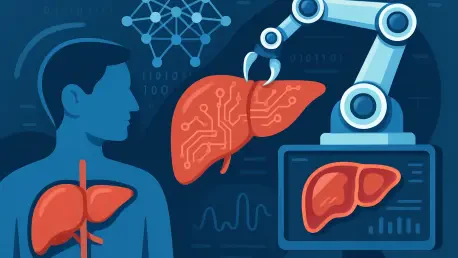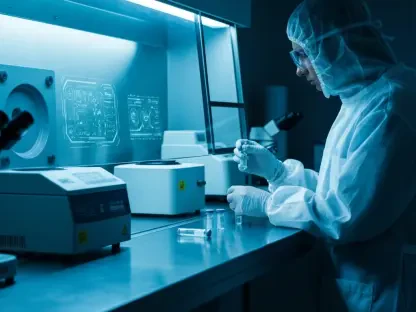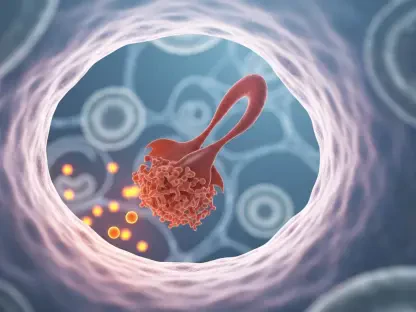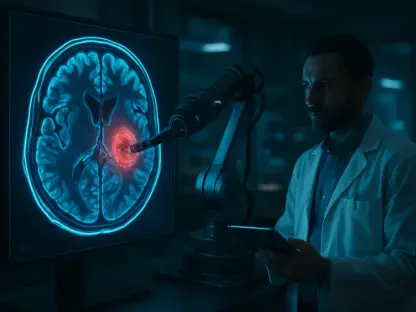I’m thrilled to sit down with Ivan Kairatov, a renowned biopharma expert with extensive experience in tech and innovation within the healthcare industry. Ivan has dedicated much of his career to advancing research and development, particularly in the intersection of technology and organ transplantation. Today, we’ll dive into a groundbreaking machine learning model designed to improve the success of liver transplants from circulatory death donors. Our conversation will explore the challenges of this type of organ donation, the innovative ways machine learning is addressing critical timing issues, the impact on transplant efficiency, and the future potential of such technologies in saving more lives.
Can you start by explaining what donation after circulatory death means in the context of liver transplants, and how it differs from other types of organ donations?
Absolutely. Donation after circulatory death, often called DCD, refers to organ donation that happens after a patient’s heart stops beating following the removal of life support. This is different from brain death donations, where the brain has ceased functioning, but the heart is still beating with the help of machines, keeping organs well-oxygenated. In DCD, the timing is incredibly tight because once life support is withdrawn, the organs start to deteriorate quickly due to reduced blood flow. For liver transplants, if the donor doesn’t pass within 30 to 45 minutes, the liver often becomes unusable due to the risk of complications for the recipient. That urgency sets DCD apart and makes it a complex process compared to brain death donations.
What inspired the development of this machine learning model for liver transplants, and what specific challenges were you aiming to tackle?
The inspiration came from a stark reality: there are far more patients waiting for liver transplants than there are available organs, and with DCD, about half of potential transplants get canceled because the timing doesn’t work out. We saw a huge gap in predicting whether a donor’s death would occur within that critical window of 30 to 45 minutes. Surgeons traditionally rely on their judgment, using vital signs and other clinical data, but it’s not always accurate, leading to wasted resources and missed opportunities. We believed machine learning could analyze vast amounts of data more consistently and help predict outcomes with greater precision, ultimately making the process more efficient and increasing the number of successful transplants.
Can you walk us through how this machine learning model predicts a donor’s time of death, and what kind of data it relies on?
Sure. The model is designed to predict whether a donor will pass away within the viable time frame for transplantation by analyzing a wide range of clinical information. This includes basic details like age, gender, and body mass index, as well as real-time health metrics such as blood pressure, heart rate, respiratory rate, and urine output. We also factor in blood test results, cardiovascular history, and neurological assessments—like pupil response or gag reflex—to gauge the donor’s condition. Additionally, ventilator settings are considered to understand how much breathing support is needed. The model processes all this data to generate a prediction, helping transplant teams decide whether to proceed with preparations. It’s trained on thousands of real-world cases, which allows it to recognize patterns that might not be obvious to human judgment.
How does the model’s accuracy stack up against the judgment of surgeons or other existing tools, and what surprised you about its performance?
The model has shown impressive results, accurately predicting the time of death about 75% of the time, compared to surgeons’ accuracy of around 65%. It also outperforms other computerized tools currently in use. What surprised us most was how well it handled incomplete data. Medical records aren’t always perfect, and sometimes key information is missing, but the model still delivers reliable predictions in those cases. Another striking outcome was the 60% reduction in futile procurements—cases where preparations start but the donor passes too late for the organ to be usable. That kind of improvement wasn’t something we fully anticipated at the outset, and it’s been incredibly rewarding to see.
Speaking of futile procurements, can you explain what they are and why reducing them by 60% is such a big deal for the transplant process?
Futile procurements happen when a transplant team begins the process—allocating resources, preparing surgical teams, and sometimes even starting to retrieve the organ—only to find that the donor’s death occurs outside the viable time frame, making the liver unusable. Reducing these by 60% is huge because it saves time, money, and emotional energy for everyone involved, from healthcare workers to patients and families. It streamlines the entire system, allowing resources like normothermic machine perfusion devices, which keep organs viable during transport, to be allocated more effectively. Most importantly, it means more patients on the waitlist can potentially receive a transplant since fewer opportunities are wasted.
The study mentions missed opportunities where a donor’s death occurs within the right time frame, but a transplant still doesn’t happen. Can you shed light on why this occurs?
Yes, missed opportunities are a tough challenge. These happen when a donor passes within the acceptable time frame for transplantation, but the team isn’t prepared because they didn’t anticipate the timing correctly. Since preparations must start before the donor’s death, if the prediction—whether by a surgeon or a model—isn’t aligned with the actual outcome, the window closes before a transplant can occur. Both our model and surgeon judgment currently have a missed opportunity rate of just over 15%. We’re actively working to lower this by refining the algorithms and exploring new approaches, because every missed opportunity represents a patient who could have received a life-saving transplant.
Can you tell us more about how the model is customizable to fit different surgeon preferences or hospital protocols?
Absolutely. We designed the model with flexibility in mind because not every surgeon or hospital operates the same way. For instance, some might define the critical time frame starting from when life support is removed, while others might start the clock at the onset of agonal breathing, which is a gasping pattern seen as the body shuts down. The model can be adjusted to align with these preferences. We’ve also integrated a natural language interface, similar to conversational AI tools, that pulls relevant data directly from medical records into the model, making it easier to adapt to different systems or documentation styles. This customization ensures the tool is practical and user-friendly across various settings.
What is your forecast for the future of machine learning in organ transplantation, particularly beyond liver transplants?
I’m incredibly optimistic about the future. Machine learning is already showing immense potential in liver transplants, and we’re just scratching the surface. I believe we’ll see even greater accuracy and fewer missed opportunities as algorithms improve and more data becomes available for training. Beyond livers, we’re exploring applications for heart and lung transplants, where timing and organ viability are equally critical. In the long term, I envision a healthcare landscape where AI tools work hand-in-hand with medical professionals to ensure that every viable organ is matched with a patient in need, potentially eliminating waitlists altogether. It’s an ambitious goal, but with the pace of technological advancement, I think it’s within reach in the coming decades.









